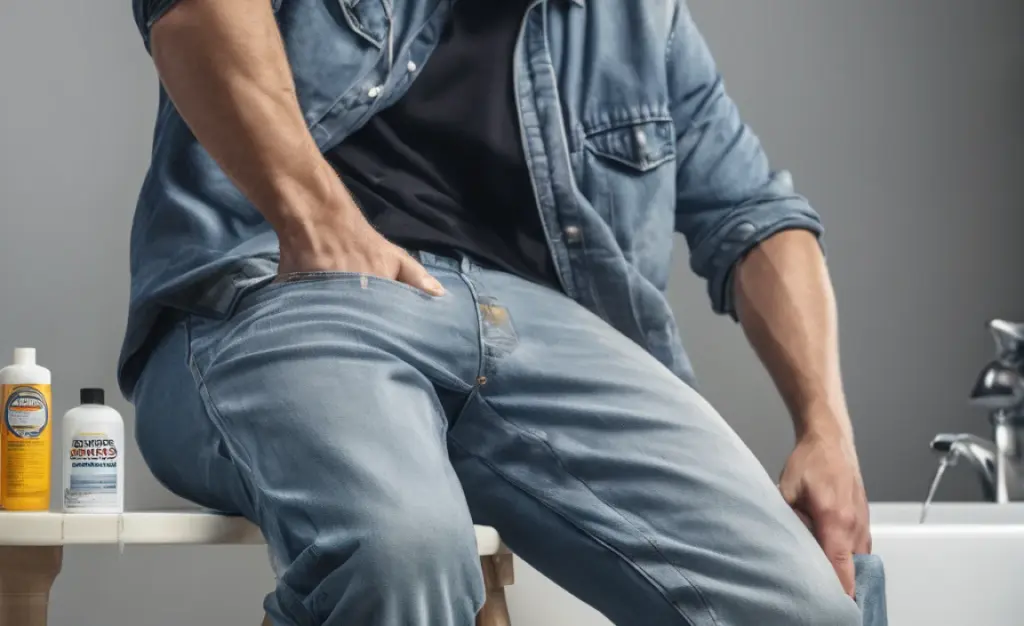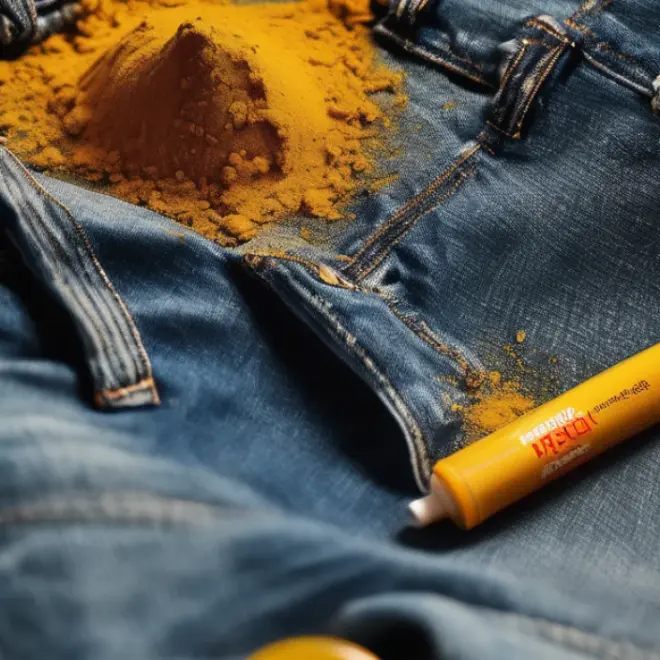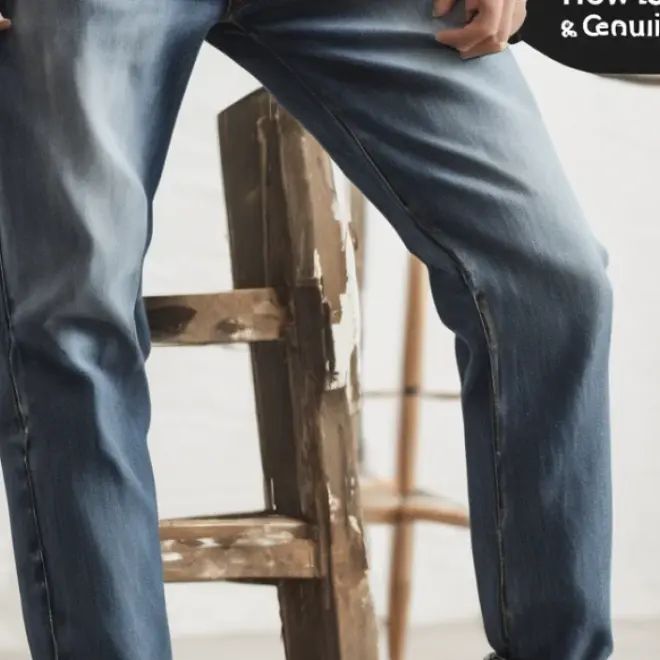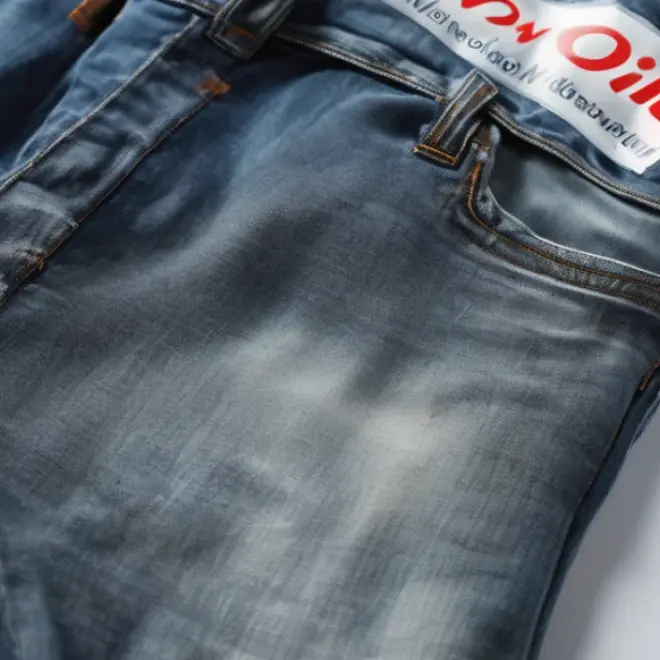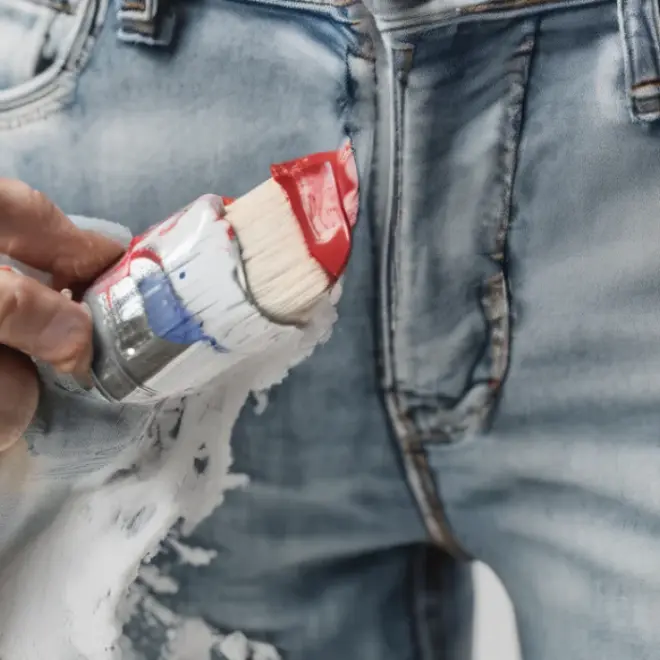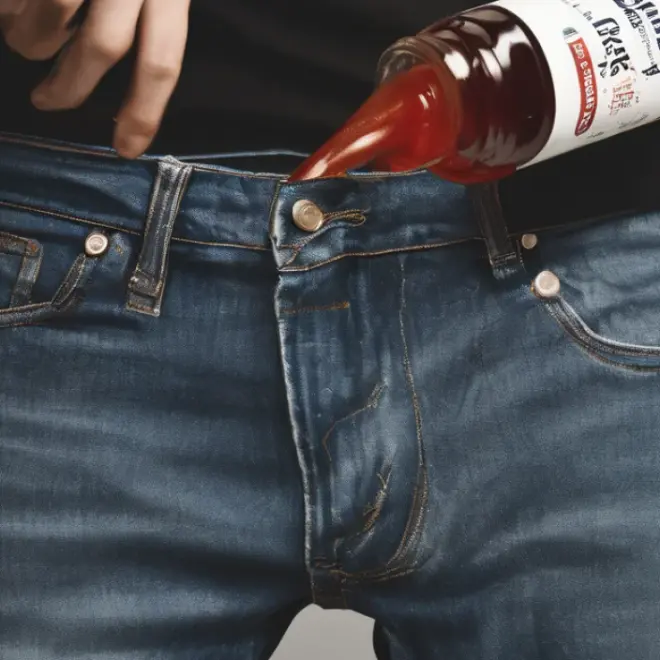Quick Summary: You can temporarily shorten dad jeans using shampoo. This method works by leveraging the shampoo’s compounds to slightly shrink the fabric fibers, creating a subtle, reversible hem. It’s a quick fix for a quick style change, perfect for when you need your jeans a bit shorter without permanent alteration. Follow these simple steps for an easy, at-home solution.
Ever find yourself with a pair of perfectly good dad jeans that are just a little too long? That common frustration can be a thing of the past. Many of us have experienced the moment when our favorite “dad jeans” feel like they’re swimming on our ankles, making them look less stylish and more like hand-me-downs. The thought of actually cutting and sewing them might feel daunting, or perhaps you’re looking for a temporary solution. What if I told you that a common household item, like shampoo, could offer a simple, no-sew fix? It sounds unusual, but with a bit of understanding about fabric and a touch of patience, you can achieve a neat, temporary hem. This guide will walk you through exactly how to do it, step-by-step, so you can confidently wear your dad jeans at the perfect length, no sewing machine required.
Why You Might Want to Temporarily Hem Your Dad Jeans
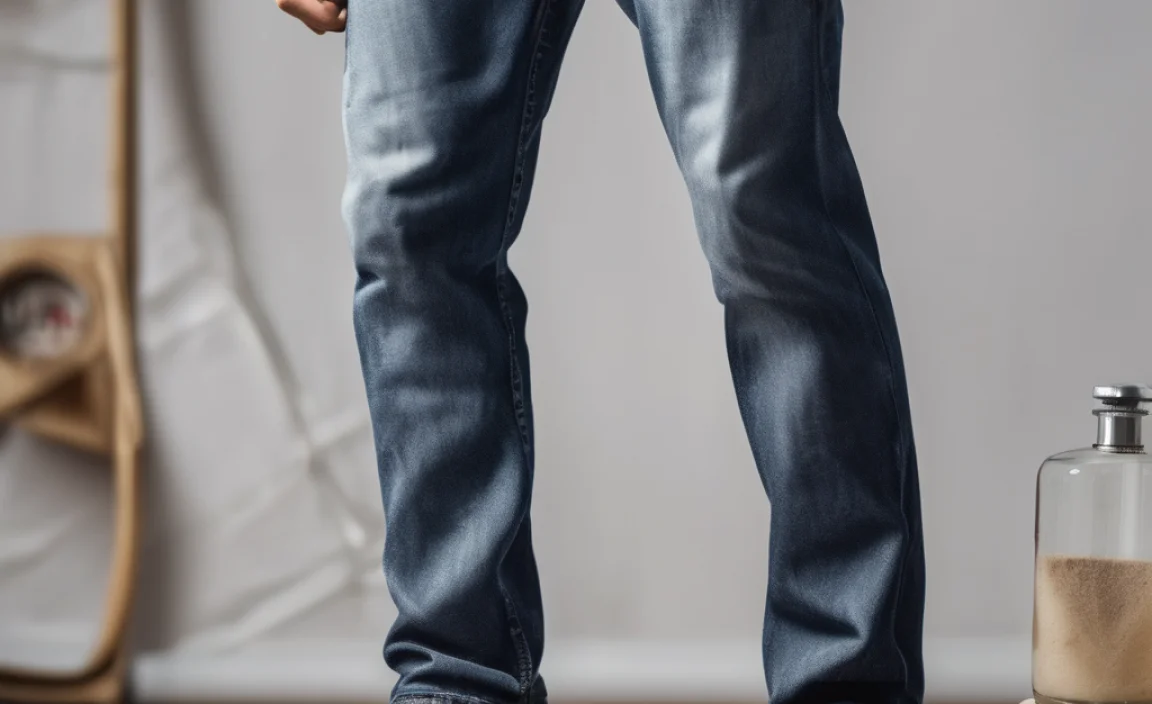
Dad jeans, with their relaxed fit and often slightly cropped or longer hem, are a fantastic staple for any casual wardrobe. However, even the most beloved pairs might not have the ideal inseam for every outfit or occasion. Sometimes, a shoe choice calls for a slightly shorter jean, or perhaps the way they’ve softened with wear has made them a touch too long for your preference. This is where a temporary hem comes in handy. It allows you to:
- Experiment with different lengths without committing to permanent alterations.
- Adjust the look of your jeans for specific footwear, like sneakers or boots.
- Quickly fix jeans that have stretched or softened over time.
- Avoid the stress and cost of professional tailoring or learning to sew.
Understanding the Science (and Magic) of Shampoo for Fabric

It might sound surprising, but certain ingredients in shampoo can have a mild shrinking effect on natural fibers like cotton, which makes up most denim. Shampoos, especially those designed for clarifying or those with sulfates, often contain surfactants. These compounds can interact with the protein and cellulose fibers in cotton. When exposed to a gentle heat and a controlled environment, these interactions can cause the fibers to contract slightly. It’s not a drastic, permanent shrinkage, but a subtle tightening that, when applied strategically, can mimic a hem. This is a common trick in textile care, although it’s important to use the right type of shampoo and be gentle to avoid damaging the fabric.
What You’ll Need: Your “Shampoo Hemming” Toolkit
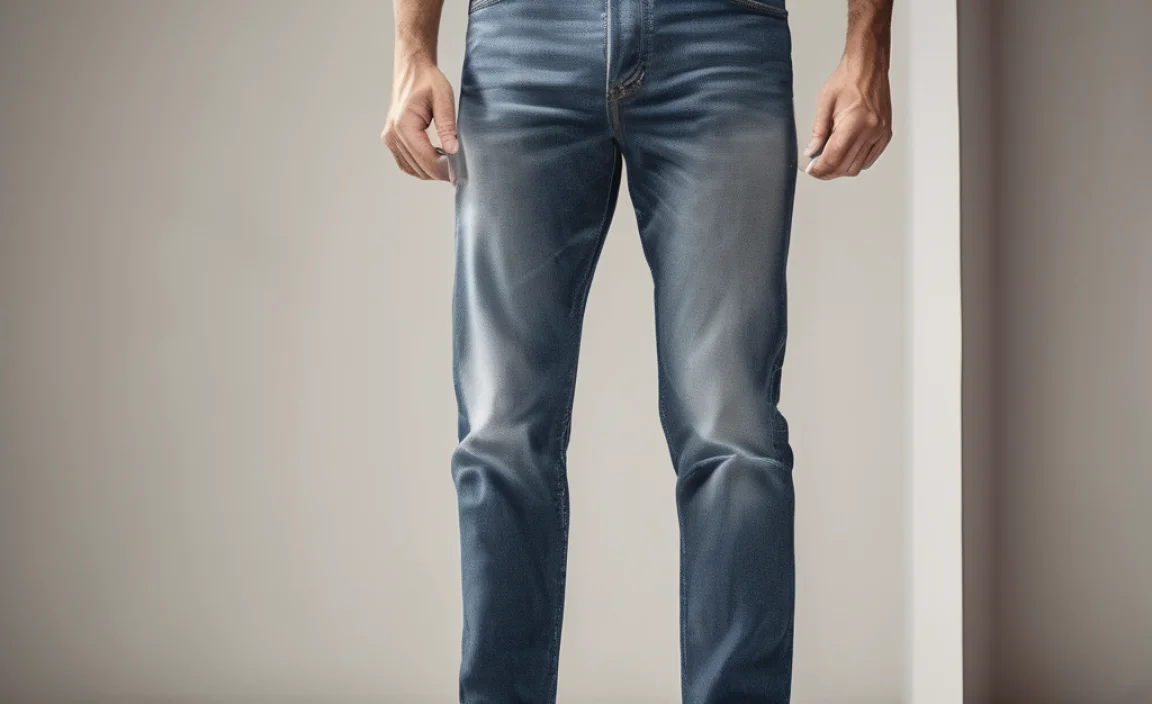
Gathering your supplies is the first step to a successful, no-sew hem. You don’t need anything fancy, just common household items.
- Shampoo: A clarifying shampoo or one with sulfates often works best, as these ingredients are more likely to interact with cotton fibers. Avoid moisturizing or sulfate-free options for this specific purpose.
- Lukewarm Water: Tap water is perfectly fine.
- A Basin or Large Bowl: Big enough to submerge the bottom of one pant leg at a time.
- A Towel: An old, absorbent towel is ideal for drying.
- A Flat Drying Surface: A drying rack or a clean, flat area where you can lay the jeans flat.
- Optional: A Measuring Tape: If you want to be precise about where you’re creating the hem.
- Optional: Fabric Pins: To help hold the folded hem in place while drying, if needed.
Step-by-Step Guide: How to Hem Dad Jeans with Shampoo

Now, let’s get to the practical part. This process is designed to be straightforward and easy to follow, even if you’ve never done anything like this before. Remember to work with one leg at a time for the best results.
Step 1: Prepare Your Jeans
Start with your dad jeans clean. If they have any stains, it’s best to wash them normally. Ensure they are completely dry before you begin this process. This method works best on dry fabric.
Step 2: Mix Your Shampoo Solution
In your basin or large bowl, mix about 2-3 tablespoons of your chosen shampoo with enough lukewarm water to submerge the bottom few inches of one pant leg. You don’t need a lot of shampoo; the goal is a gentle concentration, not lather.
Step 3: Submerge and Soak the Hem Area
Carefully dip the bottom of one pant leg into the shampoo and water mixture. Ensure only the part you want to shorten is submerged. For dad jeans, this might be the last 2-4 inches, depending on how much length you want to remove. Let this area soak for about 5-10 minutes. You’ll notice the fabric starting to absorb the solution.
Step 4: Gently Wring and Rinse (Slightly)
After soaking, gently wring out the excess liquid from the submerged part of the pant leg. You want it damp, not dripping wet. You don’t need to rinse the shampoo out entirely at this stage; a light rinse under cool water to remove some of the suds is sufficient. The goal is to leave a small amount of the shampoo’s active ingredients in the fabric fibers.
Step 5: Create and Shape the Hem
This is where you define your new hemline. Decide how much you want to shorten the jeans. You can do this by simply folding the damp fabric upwards to your desired length. Smooth out the fold firmly with your hands. Aim for an even fold all the way around the leg. If you want a crisper hem that stays put, you can use a couple of fabric pins to secure the fold from the inside of the pant leg. Make sure the pins are small and discreet.
Step 6: Drying for the “Shrink”
This is a crucial step. Lay the jean leg flat on your clean, dry towel to absorb excess moisture. Then, transfer it to a drying rack or lay it on a flat surface away from direct heat or sunlight. You want the jeans to dry naturally. As the damp, shampoo-treated fibers dry under the slight tension of the folded hem, they will naturally contract a bit more. This drying process is what solidifies the subtle ‘shrunk’ effect. It might take several hours, or even overnight, depending on humidity. Ensure the other pant leg remains dry during this process to maintain their original length.
Step 7: Repeat for the Other Leg
Once the first leg is dry and you’re happy with the hemmed length, repeat the entire process exactly for the second pant leg. Consistency is key to ensure both legs look balanced.
Step 8: Final Touches and Wear
Once both legs are dry and hemmed, try on your jeans. You should notice a distinct difference in length. The shampoo method typically creates a subtle, natural-looking fold rather than a sharp, creased hem, which is often desired for a relaxed dad jean look. You can gently press the hem with an iron on a low setting if you want a crisper line, but be cautious not to overdo it and flatten the desired texture. Your dad jeans are now ready to wear!
Alternative Temporary Hemming Methods
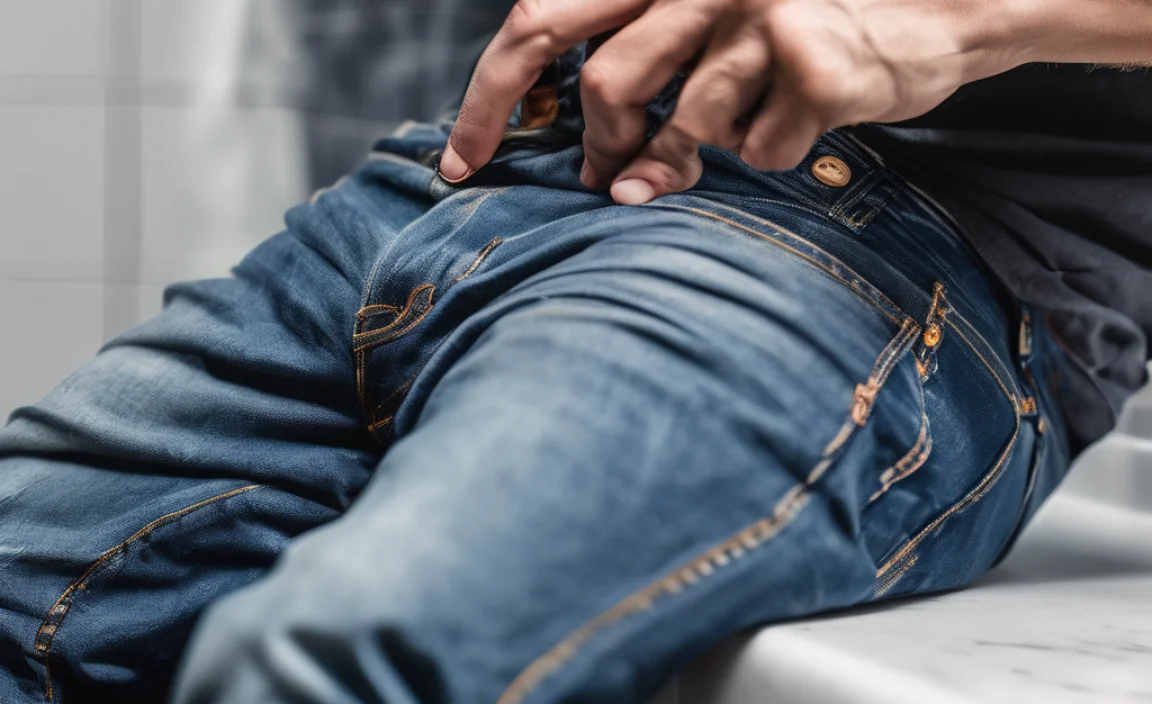
While shampoo is an interesting and accessible option, there are other temporary hemming methods that might suit you better depending on your needs and the look you want.
| Method | How it Works | Pros | Cons | Best For |
|---|---|---|---|---|
| Fabric Glue | Uses a special fabric adhesive to bond fabric layers. | Strong, relatively permanent temporary hold. Quick to apply. | Can feel stiff if too much is used. Permanent bond if not removed carefully. | Creating a firm hem or cuff that needs to last a while. |
| Fashion Tape (Hem Tape) | Double-sided adhesive tape designed for fabrics. | Easy to use, no mess, discreet. Reversible. | May not hold up to heavy wear or washing. | Quick fixes, trying out a new hem length for an event. |
| Iron-On Hem Tape (No-Sew Hem Tape) | A fusible webbing that melts with heat to bond fabric. | Creates a strong, durable bond. Can withstand washing. | Requires an iron. Can be permanent if not done carefully. | More durable temporary hem needed for regular wear. |
| Safety Pins | Small pins are used to fold and secure the fabric. | Extremely easy, accessible, and completely reversible. No damage to fabric. | Can be visible. Pins might come undone. Can snag. | Very temporary, quick adjustments for a single wear. |
Pros and Cons of the Shampoo Hemming Method
Like any DIY trick, the shampoo method has its advantages and disadvantages. Understanding these will help you decide if it’s the right choice for your dad jeans.
Pros:
- Accessibility: You likely already have shampoo at home.
- No Special Tools: No sewing machines, special glues, or irons are needed.
- Gentle: It’s a relatively gentle way to alter fabric compared to harsh chemicals.
- Reversible: The effect is temporary and can be washed out, returning the jeans to their original length.
- Natural Look: Often results in a soft, natural-looking hem that suits the relaxed vibe of dad jeans.
Cons:
- Subtlety: The shrinkage is mild, so it won’t work for drastic length adjustments.
- Consistency Issues: Achieving a perfectly even hem on both legs can take practice.
- Time-Consuming: The drying process requires patience.
- Fabric Dependent: Works best on 100% cotton denim. May not be as effective on blends.
- Potential for Unevenness: If not done carefully, the hem might look a bit wavy.
Tips for Success and Common Pitfalls to Avoid
To make sure your shampoo hemming goes smoothly, keep these tips in mind:
- Test First: If you’re unsure about your shampoo or denim blend, test on an old garment or an inconspicuous area of the jeans first.
- Be Patient with Drying: Don’t rush the drying process. Natural air drying is key to the subtle shrinking effect. Resist the urge to put them in a hot dryer, as this could lead to uneven shrinkage or damage.
- Work in Sections: If your jeans are very long, focus on hemming a small section at a time to ensure evenness.
- Consider the Wash: This method is best for dry jeans. If you need to wash them afterward, do so in cold water on a gentle cycle to help maintain the hem.
- Washing Instructions: After shampoo hemming, remember that frequent washing will eventually reverse the effect. For a more permanent hem, you’ll need to consider sewing or other methods. For more information on proper denim care to preserve your jeans, check out resources from the Federal Trade Commission.
- Don’t Over-Soak: Excessive soaking can weaken fabric fibers. Stick to the recommended 5-10 minutes.
- Even Distribution is Key: When folding and drying, ensure the fabric is as smooth and evenly distributed as possible to avoid a lopsided hem.
When to Consider Permanent Alterations
While the shampoo method is great for a quick, temporary fix, it’s not a substitute for permanent hemming if you need a reliable, long-lasting adjustment.
You should consider permanent alterations if:
- You want a very precise, crisp hemline.
- You need to shorten your jeans significantly.
- You want the hem to withstand frequent washing and wear without changing.
- You plan to wear the jeans with specific shoes that require a very exact length.
For permanent hemming, options include:
- Sewing by Hand: A basic stitch can create a clean hem.
- Using a Sewing Machine: For a faster and more durable finish.
- Iron-On Hem Tape: A popular no-sew option that creates a strong bond.
- Professional Tailoring: The most accurate and professional way to get the perfect fit. For guidance on what to discuss with a tailor, the Association of Master Tailors often provides helpful insights.
Frequently Asked Questions about Hemming with Shampoo
Q1: Will this method permanently shrink my jeans?
No, the shampoo hemming method is very mild and temporary. The effect is achieved through a gentle interaction of shampoo with cotton fibers, and it can be reversed by washing the jeans normally in cool water.
Q2: What kind of shampoo should I use?
Clarifying shampoos or those containing sulfates tend to work best because their surfactants are more effective at interacting with cotton fibers. Avoid overly moisturizing or sulfate-free shampoos for this purpose.
Q3: How much length can I realistically shorten my jeans by?
This method is best for subtle shortening, typically no more than 1-3 inches per leg. It creates a gentle fold rather than a sharp crease, so drastic changes are not possible.
Q4: What if my jeans aren’t 100% cotton?
This method works most effectively on 100% cotton denim. If your jeans are a blend with synthetic fibers (like polyester or spandex), the effect will likely be minimal or nonexistent.
Q5: Can I use hot water or a dryer to speed up the process?
It’s strongly recommended not to use hot water or a dryer. Hot temperatures can lead to uneven shrinkage, damage the fabric, or even set the shampoo in a way that’s hard to remove. Air drying naturally is crucial for achieving the subtle effect.
Q6: How do I remove the hem if I don’t like it?
Simply wash the jeans as you normally would, preferably in cool water on a gentle cycle. This will loosen the fibers and remove the shampoo residue, returning the jeans to their original length.
Q7: Will the shampoo damage my jeans?
When used as directed, in mild concentrations and for short soaking times, shampoo is unlikely to cause significant damage to sturdy denim. However, always be cautious and consider testing on an inconspicuous area if you are concerned.
Conclusion: Your Jeans, Your Length, Your Way
There you have it – a simple, accessible, and surprisingly effective way to adjust the length of those perfect-fit dad jeans that are just a tad too long. The shampoo hemming method offers a fantastic no-sew solution for those moments when you want a quick tweak rather than a permanent alteration. It empowers you to adapt your wardrobe to your style needs with minimal effort and common household items. Remember, the beauty of this technique lies in its reversibility and its gentle approach to fabric. So, next time your dad jeans are feeling a bit too long, reach for the shampoo, follow these steps, and enjoy your perfectly hemmed denim. Experiment, have fun, and wear your jeans with confidence, knowing you’ve got them fitting just right for you.


